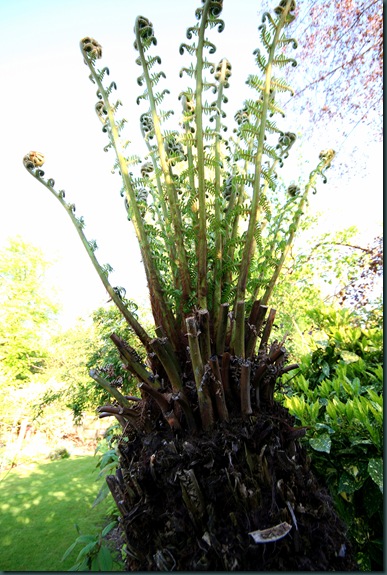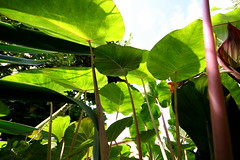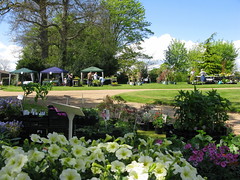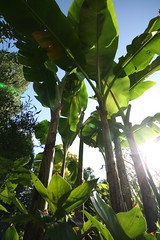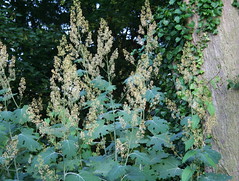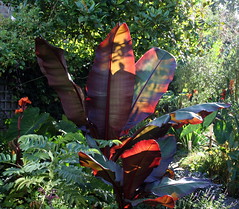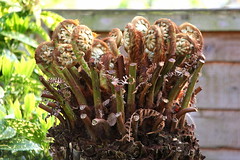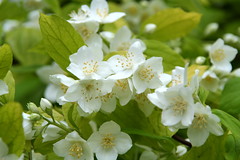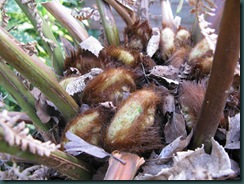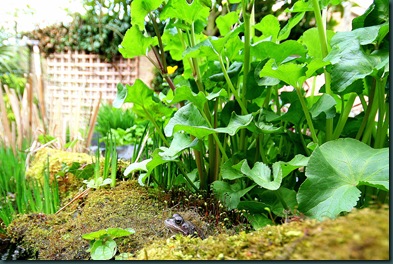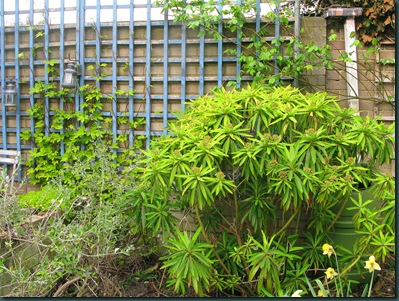Dicksonia antarctica very much alive.
I’ve noticed from the blog counter data that many people have found this blog as a result of a search on the topic “is my Tree fern dead?”
So this is a photo taken this evening of the new fronds (croziers) on my tall Tree Fern. ( a poor photo).
It has been a cold winter and all the fronds on my Dicksonia’s were killed by the frost. But the tallest Tree Fern is making rapid progress, perhaps too rapid? There seems to be about 30 new fronds coming up and that could mean that each frond will be small or that it is a sign that the whole tree feels threatened and might be on its last legs.
Meanwhile, the small tree fern has only just started to show new growth. I have been keeping the trunks damp by watering them as up until the last few days, it has been very dry weather.
